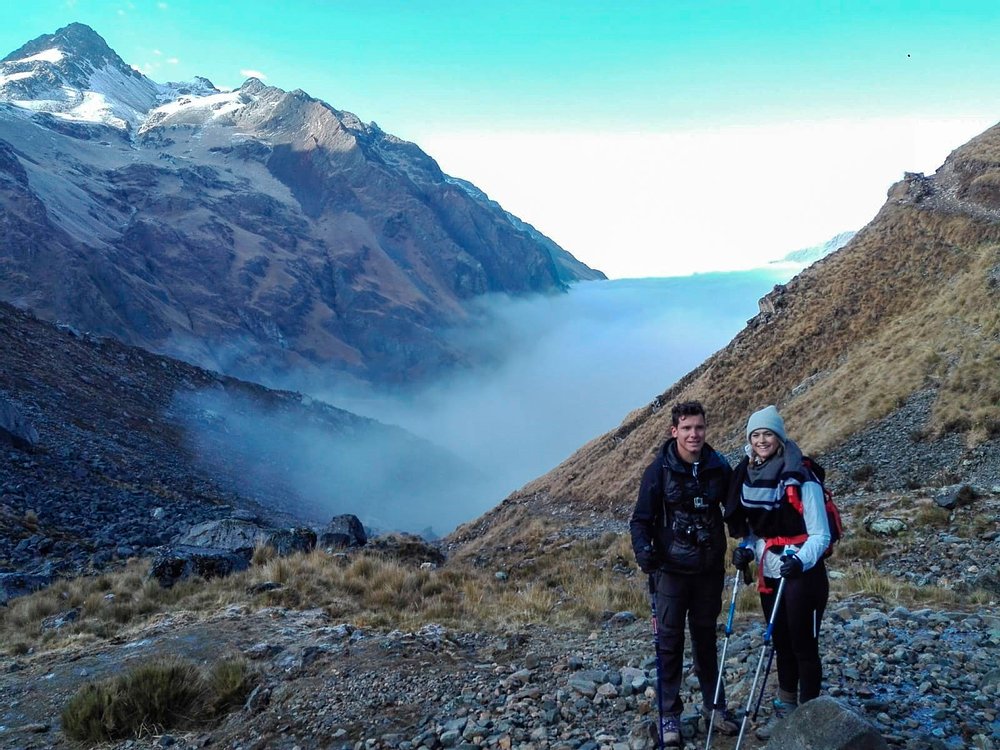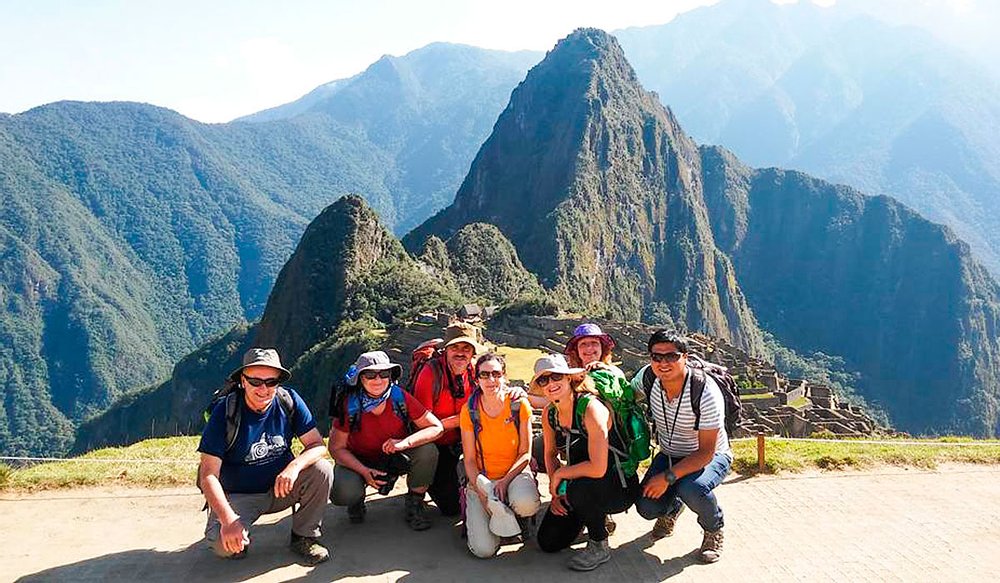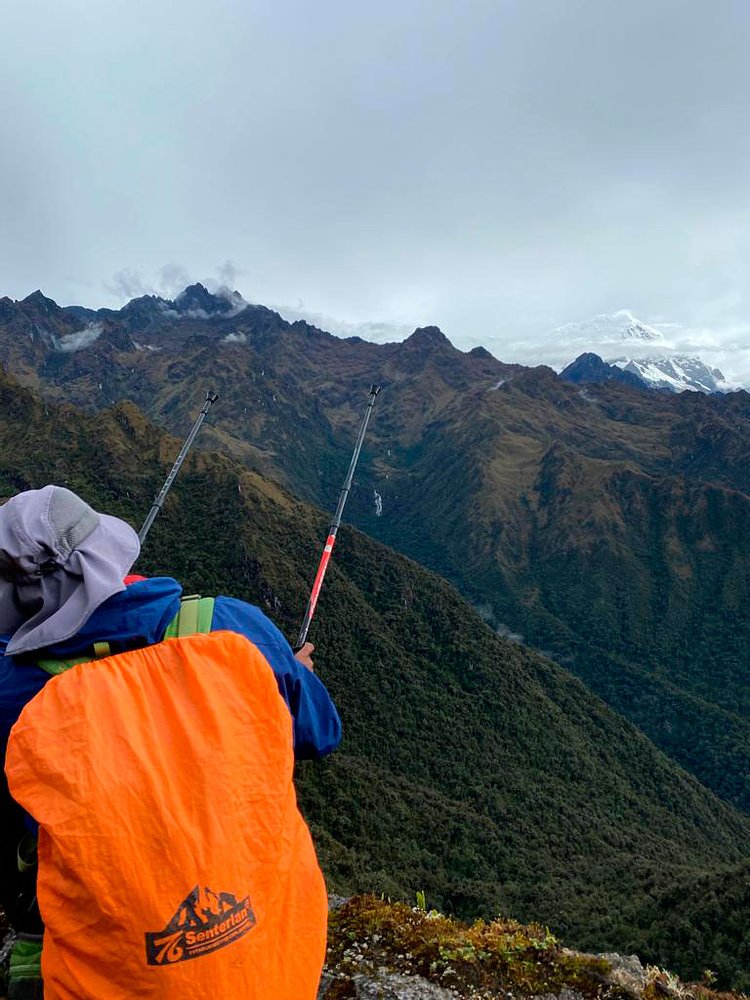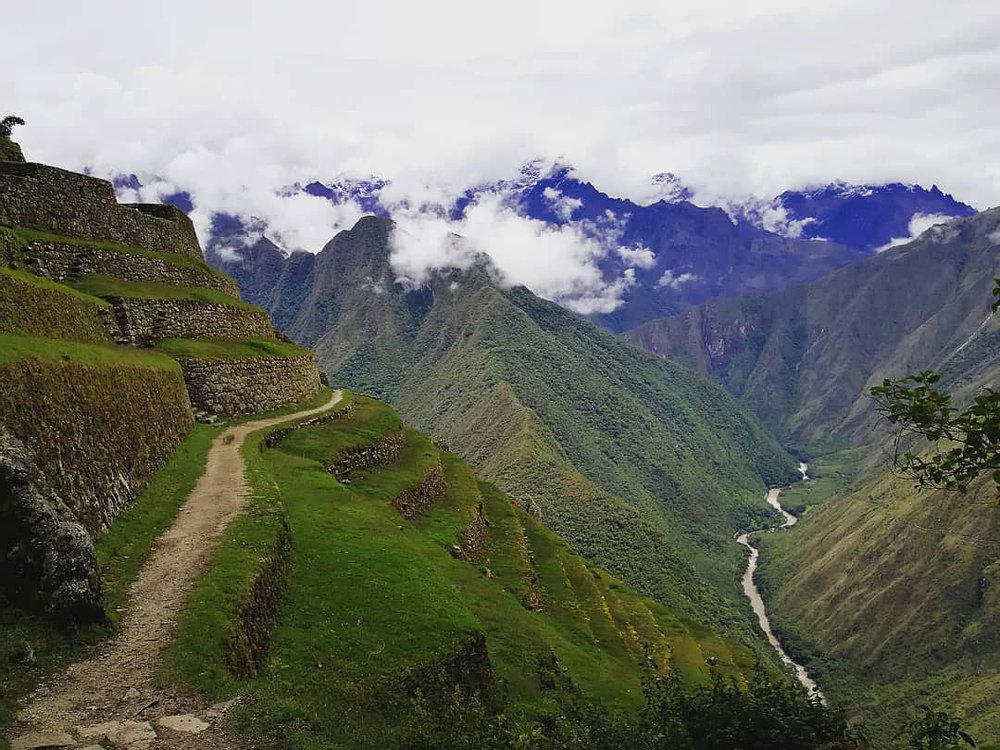Trekking in Peru: Inca Trail – hiking to Machu Picchu
Hiking to Machu Picchu in the Peruvian Andes: One of the last wonders of the world can be reached via one of the best trekking routes in Peru, if not the world. Without an official guide, however, no one is allowed to set off alone. Here we show what needs to be considered when organizing the trip.
The Inca Trail ranges from 2,500 to 4,200 meters at its highest point and leads through a spectacular landscape framed by snow-capped Andean peaks. Trekking on the Inca Trail requires a good physical condition, but the tour is not too difficult and can be done by most people who are reasonably fit.
Best season to hike the Inca Trail
The dry season from May to September is the best travel time for this trekking experience. However, the months of June to August are quite cold at night. March, April, October and November are warmer and rainy. In February the trail is closed for maintenance.
Day 1 - Starts from Cusco to the Inca Trail (km 82)
We start the Inca Trail trek from Cusco early in the morning – actually. We as well as all other members of our tour group were collected at the hotel before 4 a.m. Our guide was nice and supportive while hiking, but his knowledge of the Inca and the ruins was at least "incredible".
After a breakfast stop in Ollantaytambo, where we all equiment provided with our guide and cook. they has provide the hiking poles, sleeping bag and inflatable roll mattress and we bought and coca leaves (to chew against altitude sickness) and some snack, then we went to kilometer 82, the official start of the Inca Trail, at 2,600 m. There we had to our guide did a lot of paperwork while we got ready for the hike and got to know the team (2nd guide, porters, cook).
Since the Inca Trail is well known, the number of hikers was limited to 500 per day (approx. 200 guests and 300 guides/cooks/porters) to preserve it. In the popular travel months in summer you should therefore plan 3 to 6 months in advance for the registration. You are not allowed to walk the Inca Trail alone, you have to walk it in a group with a guide to protect the trail.
The tour operator where you book the tour also organizes the personal Inca Trail permits. For a tour on the Inca Trail, a tour operator must be selected at home months in advance and booked through them. The passport is registered, the original of which must be present at the starting point of the Inca Trail.
Around noon we really started on the Inca Trail. We were in a group of 10 guests with 14 porters plus 2 guides. The first stage is rather relaxed. It's relatively flat uphill, initially along the Urubamba River.
The first Inca highlights are the ruins of Huillca Raccay and Patallacta, which we could only admire from above.
We finished the first day after about 12 km in Wayllabamba at about 3,100 m. In the camp we got a first intensive impression of what it means to be in a group with porters and a cook. The porters left with us. When we arrived, all tents were set up, a kitchen and a dining tent were ready, we were given warm water and towels for our hands. The chef had prepared a 3-course meal for us on a gas cooker. Wayllabamba is the last (tiny) community on the way, and there's even a small shop.
Day 2 - Wayllabamba - Dead Woman's Pass - Pacaymayu
On the second day, we start from 3,100 m in Wayllabamba to 4,215 m, the highest point of the Inca Trail. And when you think you've made it, it's a really steep 700 m down and then over a mountain again to Pacaymayo Camp at 3,500 m.
We started relatively relaxed in the morning. First it goes through the jungle, and apart from trees and a small watercourse there is little to see. Since we started the first day after the crowds due to our late start, we only realized how full the Inca Trail actually is despite the restrictions here in the jungle on the second day.
While we fought for every meter in the increasingly thin air, the porters ran past us with the heaviest luggage.
The porters dismantle the camp after the hikers have left. Then they overtake the group again and set up the cooking and dining tent at noon and the entire camp in the evening before the hikers arrive.
After we finally made it out of the tree zone, an impressive panorama opened up.
And the further we hike, the more noticeable the altitude becomes, and shows who can handle it well and who doesn't. We had other really sporty friends in the group and they found it very difficult to get up the mountain at all. Our main guide went in front while the second guide/assistant brought up the rear with the slowest of the group, making sure everyone got there eventually.
As we covered most of the climb with the best visibility, at some point we could see the fog gathering. He got stuck on the Dead Woman's Pass, so that we - finally arrived at the top - couldn't see anything. Nevertheless, we were very happy to have reached the pass.
After a short break, we started our descent again, because not only was the air thin on the pass, it was also windy and cold. The descent was almost as tough as the ascent - it was a very steep descent and we were all tired after the pass.
The interesting thing about the Inca Trail is that it is not a typical mountain trail, but paved paths with stairs. Not evenly paved, and the steps of the stairs are also very different, but you climb stairs up and down the mountain.
We were very happy when we finally reached our second campsite in Pacaymayu, where we were waiting for warm water, tea and an excellent three course dinner.
Day 3 - Pacaymayo - Phuyupatamarca - Wiñaywayna
On the third day it started mainly cold at 3,500 m. Before getting up, however, we had the first hot coca tea in the tent, so we quickly felt ready for the day.
In the most beautiful sunshine on the third day we mainly explored Runkurakay Inca ruins. Then we went over the second pass (3,950 m) to Sayacmarca.
On the way you also pass through small tunnels from Inca times.
After that, the trail goes up and down, but to a much lesser extent than the day before. On the third pass we take a lunch break - and we can already see Wiñaywayna in the distance.
We continue to walk to Phuyupatamarca inca ruins, after visiting the well-preserved remains of Phuyupatamarca, it's all downhill - albeit quite steep - to Winay Wayna, the last and most comfortable camp on the Inca Trail. There are even showers here, and after this refreshment we were able to enjoy the evening outside at 2,700 m in mild temperatures with a beer. But not for too long, because the next morning we went out very early.
Day 4 – Hiking to Macchu Picchu
On the fourth day we started at 4am in complete darkness, armed only with flashlights or headlamps. We want to reach Inti Punku, the sun gate, by sunrise to enjoy the view over Machu Picchu. We ran really hard to make it - just like all the other groups.
We got there in time, but whoever was there was in the fog. Machu Picchu is located in the rainforest, and so according to our guide, it is more likely to have fog in the morning than no fog. The sunrise over Machu Picchu turned out to be a gray wall for us.
During our descent to Machu Picchu, however, the fog gradually cleared, so that we could still enjoy beautiful views. After we let the view work its magic on us, there was a detailed tour of Machu Picchu. The size of the complex is impressive, walls and stairs are well preserved, the stones offer an impressive insight into the stonemasonry of the Incas.
After the tour we had time to explore the citadel independently. We actually wanted to climb the Huayna Picchu, that is the mountain in the background of the Machu Picchu complex. Today you need to book the tickets in advance. There are only 200 spaces available every day. If you want to climb up to Huayna Picchu, we recommend booking the Huayna Picchu tickets six month in advance.
After we really admired Machu Picchu extensively, we took the bus over the steep serpentines to Aguas Calientes in the valley, after a rest in the restaurant we took the train back to Cusco.





Share your thoughts
Please Sign In to leave a comment.
Please Sign In to leave a comment.